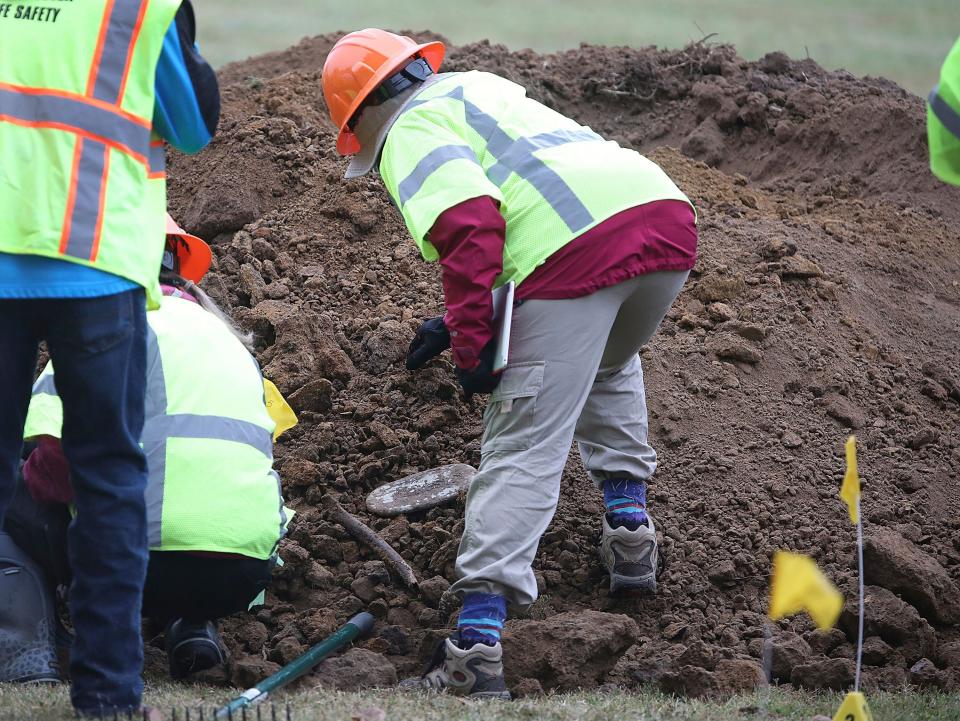99 years after Tulsa race massacre, unmarked mass grave found in search for victims, official says
Experts searching for victims of the 1921 Tulsa race massacre have found at least 10 bodies in an unmarked mass grave, an Oklahoma state official said Wednesday.
“What we were finding was an indication that we were inside a large area ... a large hole that had been excavated and into which several individuals had been placed and buried in that location. This constitutes a mass grave,” said Oklahoma state archaeologist Kary Stackelbeck.
There were 10 coffins discovered with what is presumed to be one person in each coffin, Stackelbeck said.
Start the day smarter: Get USA TODAY's Daily Briefing in your inbox
It will take time to identify the remains and determine whether they were victims of the massacre, according to forensic anthropologist Phoebe Stubblefield, a descendant of a survivor of the massacre who is assisting in the search.
Earlier in the week, remains were found in an area known as the "Original 18," where funeral home records show at least 18 Black massacre victims were buried.

Stackelbeck said earlier this week that experts don't plan to intentionally exhume the bodies. After an examination of the remains, they will be returned to the coffin and reburied. The test excavation is expected to take up to a week.
Tulsa Mayor G.T. Bynum, who first proposed looking for victims of the violence in 2018 and later budgeted $100,000 to fund the search, said experts would attempt to identify the remains and find any descendants of victims who are identified.
Researchers have 'high level of confidence: Excavation resumes for victims of 1921 Tulsa race massacre

"This will be done through forensic analysis of the remains, and by comparing them with funeral home and death certificate records," Bynum said in a statement. "We will continue to take this investigation one step at a time, wherever it may lead."
99 years after Tulsa race massacre: The search for a mass grave is underway
The excavation at Oaklawn Cemetery in north Tulsa resumed for a second time Monday after researchers failed to find victims during a search in July. Research suggests the location could hold an unmarked mass grave, and geophysical survey work previously indicated that the location had an underground anomaly, which signaled the possibility of a grave shaft.
The violence occurred May 31 and June 1, 1921, when a white mob attacked Tulsa’s Black Wall Street, killing an estimated 300 people — mostly Black — and wounding 800 more while robbing and burning businesses, homes and churches.
The massacre — which occurred two years after what is known as the “Red Summer,” when hundreds of African Americans died at the hands of white mobs in violence around the U.S. — has been depicted recently in the HBO shows “Watchmen” and “Lovecraft Country.”
Contributing: The Associated Press
Follow N'dea Yancey-Bragg on Twitter: @NdeaYanceyBragg
This article originally appeared on USA TODAY: 1921 Tulsa race massacre victims: Mass grave found by Oklahoma team

 money
money 